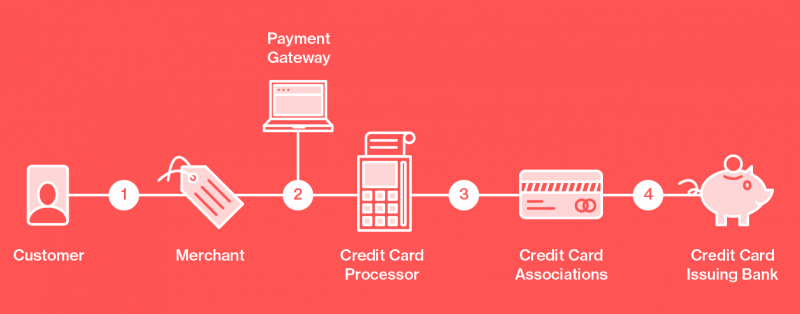Credit card processing fees are complex, lengthy, and overwhelming. Unfortunately, in order to process credit card payments for a business, merchants have to pay the fees. To be a responsible retailer, understanding the fees and overhead and disputing any unfair costs is crucial.
Who is involved?
The financial middlemen between customers and merchants include credit card associations, credit card processors, credit card issuing banks, merchant account providers, and payment gateways. Credit card associations are the companies that create credit cards, such as Visa, Mastercard, Discover, and American Express. Issuing banks include Chase, Citi, and Wells Fargo. Credit card processors, also known as acquirers, work as messengers passing batch information and authorization requests for completing transactions between merchants and credit card associations. Merchant account providers manage credit card processing with support and sales, through the aid of an acquirer. Finally, payment gateways route transactions through special portals to an acquirer, like an online shopping cart.
What are the kinds of processing fees?
Transactional fees represent the biggest cost of operating a merchant account and are assessed every time a transaction is run. Flat fees can be charged and vary by name, applicability, occurrence, and value, and tend to be the least transparent. Incidental fees only occur when a certain incident occurs, like a chargeback fee. All fees fall into either “pre-markup” or markup fees. “Pre-markup” fees are determined by the credit card issuing bank and the credit card associations, are the wholesale cost of your sales transactions, and are consistent regardless of the provider. Markup fees are how the credit card processor aims to profit from a business, and vary between processors.
Pricing Models
Pricing models vary but tend to fall into four categories: tiered pricing, subscription/membership, interchange-plus, and blended. Tiered pricing plans categorize credit card transactions as qualified, mid-qualified, or non-qualified, which can cause excessive fees in a complicated price plan. Subscription/membership can benefit merchants processing large transactions by avoiding decreasing transparency as merchants do not pay a percentage markup. Interchange plus pricing is considered the most transparent with the most understandable terms and fees, as it itemizes wholesale fees and markups that are clearly listed on the monthly statement. Blended pricing is similar to tiered pricing, but without the actual tiers as all transactions cost the exact same percentage and transaction fees, regardless of the wholesale cost. The costs are blended together to create a consistent fee and rate, making the transaction cost extremely high.
Some fees and costs are unavoidable, yet some can be negotiated with credit card and merchant account providers. Research into pricing models, fee types, and processor comparisons can pay off for your company in the long term.


